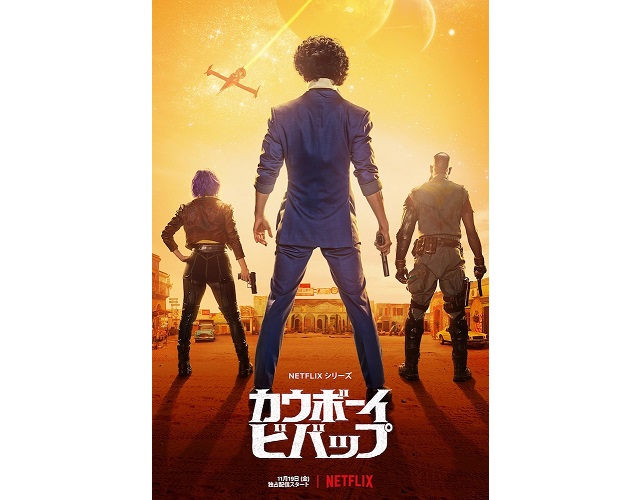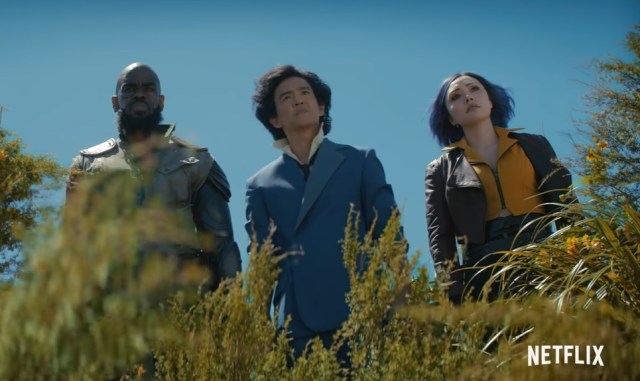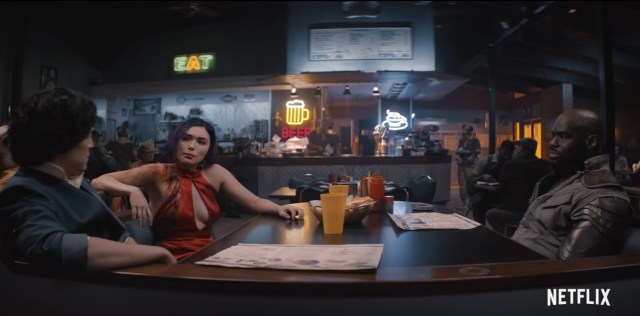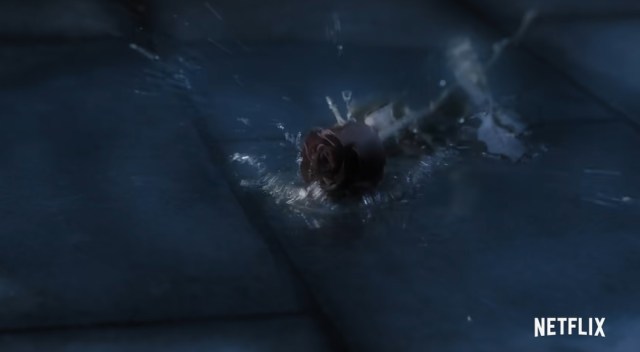
These aren’t the cowboys, or the villain, that defined the classic anime, our veteran Bebop fan says.
After decades of rumors, false starts, and delays, there’s finally a live-action version of Cowboy Bebop. Netflix managed to do what so many others couldn’t, and delivered its adaptation of the esteemed anime series to its streaming platform on November 19.
Our resident otaku reporter, Seiji Nakazawa, cleared out his schedule for the weekend so that he could watch all 10 episodes, but before we dive into his impressions, a little background on the guy. While Seiji has seen a lot of anime in his life, Cowboy Bebop is one of his all-time favorites. As a high school student, he watched the entire anime during its original 1998 broadcast on Japanese TV, then went out and spent pretty much all of his allowance on the home video release. No, not the DVDs. Seiji’s family didn’t have a DVD player, so he bought the VHS tapes – that’s how far back his Bebop fandom goes.
▼ Netflix’s live-action Cowboy Bebop
But despite his love for the original series, Seiji was determined to keep an open mind for the Netflix live-action version. “As soon as you make the transition from animation to live-action, all sorts of real-world factors come into play, so I decided ahead of time to not nitpick the visuals,” he says. “That more or less goes for the story, too. The anime is 26 30-minute episodes, and the live-action is 10 50-minute ones. It’s impossible to exactly replicate the anime’s story, so I’ve got no issues with the concept of putting together new episodes that have a déjà vu-like relation to the originals.”
With that attitude, the viewing experience got off to a pretty good start. “The action sequences aren’t quite as sharp as they are in the anime, but that’s something that can’t be helped in live-action. Overall, though, the quality feels pretty high. Jet looks like he stepped right out of the anime, and even if the live-action Spike doesn’t look like the anime Spike, he has a cool atmosphere to him. The CG when they go through the warp gates reminded me of Star Wars, and you can feel the love for the original series in parts like the inclusion of the three old guys or the scene where Spike and Jet have to eat stir-fry with no meat in it.”
But even before the end of the first episode, something had started to bother Seiji. “You can tell that everyone involved really tried their best, but it feels like they have a shallow understanding of the characters.”
How so? Let’s start with Jet. “The Netflix Jet spends a ton of time talking about his kid. Sure, there’s an episode in the anime that deals with one of Jet’s former lovers, and you do get these whiffs of his personal life,” Seiji recalls. “But the hardships in anime Jet’s past are related to his concepts of honor and loyalty, not just family troubles. If anime Jet is a man who’s trying to stoically adhere to a code, live-action Jet feels like just a dad doing his best.”
Main character Spike doesn’t feel like the Spike from the anime either, Seiji says. “It’s weird how Netflix Spike is so quick to shoot and kill people. Yeah, even in the anime he was willing to use deadly force if he had to, but he wasn’t so ready to just thoughtlessly gun people down. Aside from when he’s fighting members of the Red Dragon syndicate, you get the sense that anime Spike will only shoot someone if it’s absolutely necessary. Instead, we usually see him using his kung fu skills to beat people up. That might partially have been an aesthetic choice for the anime, but the difference still stuck out to me when watching the Netflix Bebop.”
So how about Faye? “Along with Vicious [who we’ll get to in a moment], I think Faye felt especially different in which aspects of the character the live-action version chose to focus on. When the Bebop anime was on TV back in the ‘90s, some otaku didn’t like Faye because she wasn’t a ‘cute’ character. I always thought she had a really abrasive personality, hot-tempered and ready to tear into someone verbally, but she was also a woman with a very sharp, calculating mind. I loved her intelligence, and to me anime Faye’s looks always took a backseat to her mind in terms of what made her an attractive character. But it feels like Netflix just made her someone who’s really athletic and has a dry, dry personality. That seems to be the template for Hollywood action heroines these days, but anime Faye’s appeal was something else entirely.”
And last we come to Vicious, with a few minor spoilers included.
“I imagine there are a lot of people who saw what the live-action series does with Vicious and said ‘No that’s not how the character is.’ I mean, in the Netflix Bebop he’s married to Julia and talking about how he loves her! Then there’s a scene where the leaders of the Red Dragon order Vicious to shoot her, and he hesitates? Nope, that’s not Vicious.”
“Sure, the anime does suggest that Spike and Vicious competed for Julia’s affection in the past, and even that Vicious and Julia became lovers for a period. But more than anything else, when we’re seeing Vicious in the anime’s present, his defining characteristic is how wounded he is by what he sees as Spike’s betrayal, and how that’s turned into raw, seething hatred. Vicious clearly doesn’t have any genuine romantic feelings for Julia, and the two of them are just using each other. So if Vicious was ordered to shoot Julia as a test of his loyalty, he’d do it without a thought. That’s who Vicious is. He threw away all traces of human emotion once Spike left the syndicate.”
“Vicious’ status as a deeply wounded individual is what sets up the anime’s climax, and even though anime Julia has very little screen time, you can tell she has some profound, complex connection to Vicious’ pain. I wish the Netflix Bebop hadn’t changed that to something so simplistic as just ‘love.’ The anime Julia is a cunning, self-serving, but also strong woman, and I feel like that aspect of her character is lost in the Netflix version.”
“If I had to sum up how I feel about the characters’ Netflix versions in one sentence, it’d be ‘They all keep saying things those characters wouldn’t say.’”
So, Seiji hated the live-action Bebop? Not exactly. “But it made me really appreciate how complex the anime’s characters were. The live-action version is a high-quality production, but watching it, I kept thinking ’Something feels off.’ When I was watching the anime for the first time in high school, with its hardboiled characters and dialogue and influences from foreign cinema, it all just felt so cool. So it’s ironic when Bebop finally does get a Hollywood version, it’s lost a lot of that atmosphere.”
That said, Seiji isn’t warning people off watching Netflix’s Bebop. “It definitely has more effort put into it than a lot of adaptations, and I think fans can appreciate the ways in which it does approach the feeling of the original version, and maybe one day we’ll look back on this as a step towards more successful anime-to-live-action projects? So for now, to Netflix’s Bebop, I’d say ‘You gave it a good shot.’”
Top image: Press release
Insert images: YouTube/Netflix
● Want to hear about SoraNews24’s latest articles as soon as they’re published? Follow us on Facebook and Twitter!
[ Read in Japanese ]





 Live-action Cowboy Bebop cast revealed by Netflix, but there’s someone missing from the crew
Live-action Cowboy Bebop cast revealed by Netflix, but there’s someone missing from the crew Cowboy Bebop fragrance line created to celebrate anime’s 25th anniversary
Cowboy Bebop fragrance line created to celebrate anime’s 25th anniversary Professional basketball meets Cowboy Bebop in awesome NBA playoffs/anime video【Video】
Professional basketball meets Cowboy Bebop in awesome NBA playoffs/anime video【Video】 Cowboy Bebop anime themed cafe coming to Tokyo and Osaka next month
Cowboy Bebop anime themed cafe coming to Tokyo and Osaka next month Netflix’s live-action One Piece shows off massive ships and sets in preview video【Video】
Netflix’s live-action One Piece shows off massive ships and sets in preview video【Video】 Foreigner’s request for help in Tokyo makes us sad for the state of society
Foreigner’s request for help in Tokyo makes us sad for the state of society Seaside scenery, history, and so many desserts on Yokohama’s Akai Kutsu【Japan Loop Buses】
Seaside scenery, history, and so many desserts on Yokohama’s Akai Kutsu【Japan Loop Buses】 Should you add tartar sauce to Japanese curry rice? CoCo Ichi makes diners an unusual offer
Should you add tartar sauce to Japanese curry rice? CoCo Ichi makes diners an unusual offer Japanese city loses residents’ personal data, which was on paper being transported on a windy day
Japanese city loses residents’ personal data, which was on paper being transported on a windy day Akihabara pop-up shop sells goods made by Japanese prison inmates
Akihabara pop-up shop sells goods made by Japanese prison inmates Red light district sushi restaurant in Tokyo shows us just how wrong we were about it
Red light district sushi restaurant in Tokyo shows us just how wrong we were about it Japan’s cooling body wipe sheets want to help you beat the heat, but which work and which don’t?
Japan’s cooling body wipe sheets want to help you beat the heat, but which work and which don’t? Harajuku Station’s beautiful old wooden building is set to return, with a new complex around it
Harajuku Station’s beautiful old wooden building is set to return, with a new complex around it Smash Bros. director Sakurai stabs Kirby in the face, has delicious justification for it
Smash Bros. director Sakurai stabs Kirby in the face, has delicious justification for it Amazing exhibition of Japan’s legendary “cursed katana” is going on right now【Photos】
Amazing exhibition of Japan’s legendary “cursed katana” is going on right now【Photos】 McDonald’s new Happy Meals offer up cute and practical Sanrio lifestyle goods
McDonald’s new Happy Meals offer up cute and practical Sanrio lifestyle goods Japanese ramen restaurants under pressure from new yen banknotes
Japanese ramen restaurants under pressure from new yen banknotes French Fries Bread in Tokyo’s Shibuya becomes a hit on social media
French Fries Bread in Tokyo’s Shibuya becomes a hit on social media Studio Ghibli releases new action figures featuring Nausicaä of the Valley of the Wind characters
Studio Ghibli releases new action figures featuring Nausicaä of the Valley of the Wind characters New private rooms on Tokaido Shinkansen change the way we travel from Tokyo to Kyoto
New private rooms on Tokaido Shinkansen change the way we travel from Tokyo to Kyoto Tokyo Tsukiji fish market site to be redeveloped with 50,000-seat stadium, hotel, shopping center
Tokyo Tsukiji fish market site to be redeveloped with 50,000-seat stadium, hotel, shopping center Beautiful Ghibli sealing wax kits let you create accessories and elegant letter decorations【Pics】
Beautiful Ghibli sealing wax kits let you create accessories and elegant letter decorations【Pics】 Studio Ghibli releases Kiki’s Delivery Service chocolate cake pouches in Japan
Studio Ghibli releases Kiki’s Delivery Service chocolate cake pouches in Japan New definition of “Japanese whiskey” goes into effect to prevent fakes from fooling overseas buyers
New definition of “Japanese whiskey” goes into effect to prevent fakes from fooling overseas buyers Our Japanese reporter visits Costco in the U.S., finds super American and very Japanese things
Our Japanese reporter visits Costco in the U.S., finds super American and very Japanese things All-you-can-drink Starbucks and amazing views part of Tokyo’s new 170 meter-high sky lounge
All-you-can-drink Starbucks and amazing views part of Tokyo’s new 170 meter-high sky lounge More foreign tourists than ever before in history visited Japan last month
More foreign tourists than ever before in history visited Japan last month New Pokémon cakes let you eat your way through Pikachu and all the Eevee evolutions
New Pokémon cakes let you eat your way through Pikachu and all the Eevee evolutions Disney princesses get official manga makeovers for Manga Princess Cafe opening in Tokyo
Disney princesses get official manga makeovers for Manga Princess Cafe opening in Tokyo Sales of Japan’s most convenient train ticket/shopping payment cards suspended indefinitely
Sales of Japan’s most convenient train ticket/shopping payment cards suspended indefinitely Sold-out Studio Ghibli desktop humidifiers are back so Totoro can help you through the dry season
Sold-out Studio Ghibli desktop humidifiers are back so Totoro can help you through the dry season Japanese government to make first change to romanization spelling rules since the 1950s
Japanese government to make first change to romanization spelling rules since the 1950s Ghibli founders Toshio Suzuki and Hayao Miyazaki contribute to Japanese whisky Totoro label design
Ghibli founders Toshio Suzuki and Hayao Miyazaki contribute to Japanese whisky Totoro label design Doraemon found buried at sea as scene from 1993 anime becomes real life【Photos】
Doraemon found buried at sea as scene from 1993 anime becomes real life【Photos】 Tokyo’s most famous Starbucks is closed
Tokyo’s most famous Starbucks is closed One Piece characters’ nationalities revealed, but fans have mixed opinions
One Piece characters’ nationalities revealed, but fans have mixed opinions We asked a Uniqlo employee what four things we should buy and their suggestions didn’t disappoint
We asked a Uniqlo employee what four things we should buy and their suggestions didn’t disappoint Princesses, fruits, and blacksmiths: Study reveals the 30 most unusual family names in Japan
Princesses, fruits, and blacksmiths: Study reveals the 30 most unusual family names in Japan The most awesome anime fan art is fan art that’s also traditional Japanese sweets【Photos】
The most awesome anime fan art is fan art that’s also traditional Japanese sweets【Photos】 Netflix creates otaku virtual YouTuber who’s a bilingual Japanese/English sheep girl【Videos】
Netflix creates otaku virtual YouTuber who’s a bilingual Japanese/English sheep girl【Videos】 Netflix producing stop-motion Pokémon series, stars human concierge at resort for Pokémon【Video】
Netflix producing stop-motion Pokémon series, stars human concierge at resort for Pokémon【Video】 Sanrio’s Gudetama is getting a Netflix series…that’s live-action??
Sanrio’s Gudetama is getting a Netflix series…that’s live-action?? Heads up, Aussie anime fans: Terror in Resonance to premiere at Oz Comic-Con
Heads up, Aussie anime fans: Terror in Resonance to premiere at Oz Comic-Con Live-action Netflix One Piece’s Luffy and Zoro get super detailed figures【Photos】
Live-action Netflix One Piece’s Luffy and Zoro get super detailed figures【Photos】 A funny thing happened on the way to Japan: Guess that anime song!
A funny thing happened on the way to Japan: Guess that anime song! Panic & hope: Thoughts on live-action Akira
Panic & hope: Thoughts on live-action Akira Hayao Miyazaki makes rare video appearance to check out Ghibli Museum’s revamped cafe【Video】
Hayao Miyazaki makes rare video appearance to check out Ghibli Museum’s revamped cafe【Video】 Evangelion creator Hideaki Anno wants to make a live-action Nausicaä of the Valley of the Wind
Evangelion creator Hideaki Anno wants to make a live-action Nausicaä of the Valley of the Wind Italian jazz pianist unleashes inner Ghibli fanboy, releases anime theme song album
Italian jazz pianist unleashes inner Ghibli fanboy, releases anime theme song album Eight awesome anime recommendations to close out 2020 with【Seiji’s World of Anime】
Eight awesome anime recommendations to close out 2020 with【Seiji’s World of Anime】 7 new winter 2022 anime (besides Attack on Titan and Demon Slayer) our otaku reporter recommends
7 new winter 2022 anime (besides Attack on Titan and Demon Slayer) our otaku reporter recommends One Piece Day 2023 brings more surprises than you can shake a rubbery long arm at
One Piece Day 2023 brings more surprises than you can shake a rubbery long arm at Grab the tissues: Preteens and teens pick the anime that makes them cry the most
Grab the tissues: Preteens and teens pick the anime that makes them cry the most
Leave a Reply